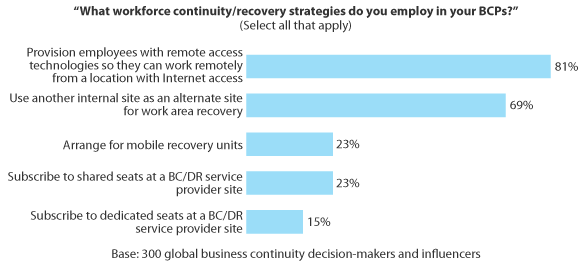Musings During A Hurricane: Why We Still Need Workforce Continuity Plans In A Mobile World
I'm having a frustrating day. It's only partly because there is a hurricane raging outside and I'm cooped up inside with a hyperactive dog. The main source of my frustration is my inability to communicate with the outside world. Yes, I still have power, and the Internet, but unfortunately, with cell networks overloaded, no landline (hello, this is 2012), and VPN failing, I can't seem to talk to anyone. At least comprehensibly. Of course, since I'm a resilient and resourceful employee, I've tried everything from GoogleTalk to Skype to our internal VOIP systems all with no success. Who would have thought in this modern era of the anytime, anywhere worker, that I would be rendered mute?

Because more and more firms are allowing employees to bring their own devices and work remotely, the predominant approach to workforce continuity is to send employees home with their laptops. In fact, according to a survey we ran last year with the Disaster Recovery Journal (participate in the 2012 survey here), 81% of companies employ the tactic of remote access. While this approach is certainly cost effective and can work well in many scenarios, like all continuity plans, it must be tested! Otherwise you risk unhappy and unproductive employees, or worse, employees you cannot communicate with. In our case, load-testing the VPN could have saved me (and I assume many colleagues) a lot of frustration.
At least for now, I still have power and Internet, so I can continue working in a somewhat limited capacity, which is the definition of resiliency. I'd also like to hear your stories of remote working during a disaster. I hope everyone stays safe and dry out there!
[UPDATE, 11/1/12] In the aftermath of the hurricane, we've made our business technology resiliency playbook free of charge for the next 30 days. I encourage you to check out the research here (Site registration required).